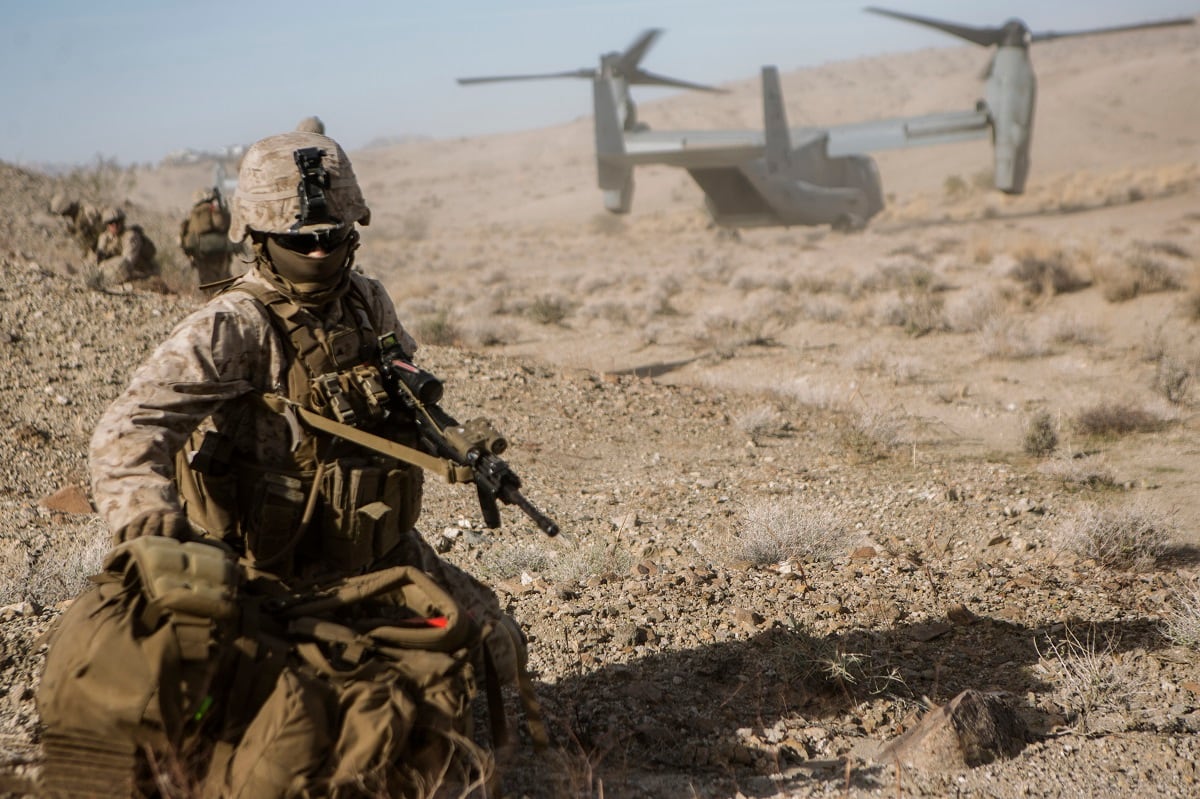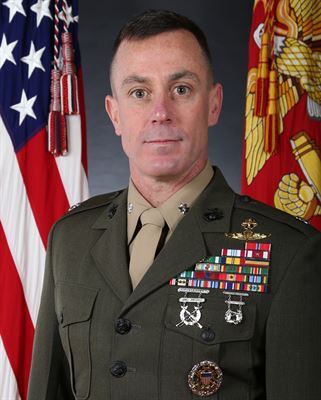CAMP LEJEUNE, N.C. — Marines completed the largest air assault performed here in at least a decade as leadership looks to bring back an old capability for future fights. But in coming years top Marine leaders want an assault twice as big.
For Exercise Steel Pike, nearly 500 Marines in waves loaded onto six CH-53E Super Stallions and eight MV-22 Ospreys to offload and set up a perimeter at a nearby Landing Zone Swallow, meeting an opposing force of more than 60 Marines equipped with all-terrain vehicles and using shoot-and-move style tactics.
Though picking up a few hundred Marines and delivering them into a location a few miles a way may look easy, planning for this event began as early as January, said Lt. Col. Darryl Ayers, battalion commander for 3rd Battalion, 2nd Marine Regiment, here.
RELATED

The entire unit returned from a unit deployment program to Okinawa, Japan, in February. Nearly three-quarters of the Marines left the unit either for other assignments or end of service.
So, over the next few months, planners such as Ayers’ operations officer Capt. Colin Bogdan began learning the chair shuffling art of figuring out how to put half a battalion’s worth of Marines on helicopters, get them to their insertion point and keep fire teams, squads, platoons and companies coordinated onto an objective.

The maneuver isn’t new, Marines have been using helicopters for such work since the Korean War and extensively in Vietnam. But anything larger than a company-sized element has been a rarity, even in the initial stages of Iraq and Afghanistan.
Ayers referenced guidance he and other commanders received from Maj. Gen. David Furness, 2nd Marine Division commander, who met with the Marine Air Wing commander to get this training rolling.
Furness, Ayers said, recalled how when working with then-Maj. Gen. Jim Mattis during the 2003 Iraq invasion. Mattis wanted to lift a battalion of Marines across the desert for an assault ― no go.
Air assets were committed elsewhere and it couldn’t be done.
That stuck with Furness. And now that all eyes are pointed toward major combat operations with near-peer competitors such as Russia and China, large-scale combat and moving troops quickly is no longer a luxury but a necessity.
But first the work starts at the fire team level.
Third Battalion received 103 new Marines straight out of the School of Infantry in just the past six weeks, Bogdan said.
“There are a lot of new joins the last couple of weeks from SOI who’ve never been on a helicopter before,” Ayers said.
So, they start with simple drills, getting a four-Marine fire team on and off a helicopter, keeping them together. Then a squad and on up.
“It’s a lot of planning, teaching, coaching, mentoring, a lot of time on the chalkboard, walking through explaining things, why they occurred."
Ayers enlisted in the Corps in 1995 and served in a reconnaissance company, often doing the early inserts ahead of the main body for just these types of operations.
But those fell in priorities as Marines and soldiers moved to forward operating bases and combat outposts where the entire unit strength could be a single company or perhaps only a platoon.
The goal is to do an entire battalion lift, or nearly 1,000 Marines, followed by a complex tactical maneuver and live fire, Ayers said.
But that’s a ways away and it’s unlikely that 3/2 and 1st Battalion, 6th Marine Regiment Marines who did today’s exercise will do that larger effort.
The matching of training calendars and unit availability means that some other lucky battalion will do the first full battalion air assault some time as soon as next year or beyond.
Still, Bogdan said, the movement was something unique, even for newly-minted infantrymen.
“This is an experience that they will probably not ever see in the Marine Corps again unless we have major combat ops,” he said.
Going by air gives the Marines ways to envelop their objective and give their adversary multiple fronts to handle.
Instead of having a “one prong problem,” the captain said, there are multiple parts of the battalion hitting from various sides.
“The tactical dilemma creates a big problem for the enemy,” he said.
A traditional mechanized assault provides more support but ties Marines to the roads, trails and “inherently limits” maneuverability, he said.
But there are challenges with air assaults that the Marines are still contending with that have yet to go away.
Marine Corps doctrine notes inherent constraints in air assault ― reliance upon open air lines of communications, limited maneuverability upon insertion, and a lack of supporting arms.
During the recent air assault, battalion command was relying on satellite communications but having difficulties with high frequency communications needed to connect the various assets.
A Marine Corps Gazette article published in April 2018 noted that technology advances mean that landing on or near an objective is extremely dangerous.
“One well-placed machine gun, rocket, or missile could disrupt or deny an entire insertion,” the unnamed author wrote. “To effectively conduct air assault in the future, we must conduct offset insertions miles away from our intended objectives to better preserve our aircraft and personnel.”
That creates its own problems of resupply. Even the simplest of items, batteries and water can present major hurdles for only a company air assault.
“For example, if a rifle company conducted insertion fifteen miles from its objective, it would be required to march under sustainment load for five hours (at a rate of three miles per hour) while maintaining security for itself and rapidly depleting its supply of water. At the conclusion of this hike, the company would be required to fight an enemy,” according to the Gazette article.
The article then promotes using the Polaris MRZR, an all-terrain four wheeled vehicle that holds four Marines. It is the current utility task vehicles, or UTVs. Long in use by special operations forces, the vehicles weigh just under 2,000 pounds and can carry 1,500 pounds and tow another 1,500 pounds.
Ospreys can transport two UTVs at a time. Or on UTV and one trailer.
The CH-53E Super Stallions can hold 30 Marines. The Osprey can carry 24.
So, using the vehicles limits how many Marines the helicopters can bring to the fight but makes those who are on board more mobile.
Todd South has written about crime, courts, government and the military for multiple publications since 2004 and was named a 2014 Pulitzer finalist for a co-written project on witness intimidation. Todd is a Marine veteran of the Iraq War.



